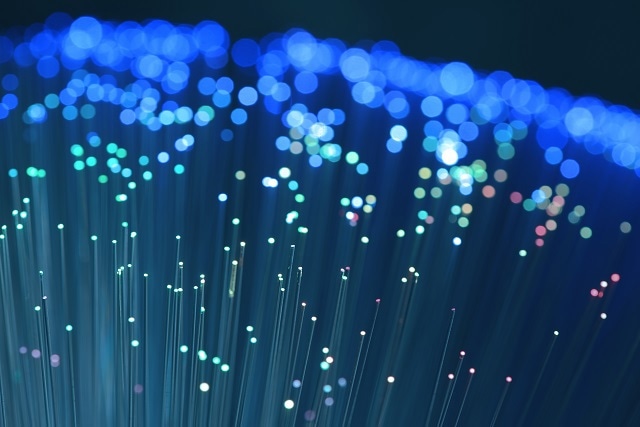
Image Credit: asharkyu/Shutterstock.com
The development of fiber optic technology has driven the dramatic progression of telecommunications. Charles Kao is commonly referred to as the 'Father of Fiber Optical Communications' due to his noteworthy contribution to the field. As a result of his work, many high-quality commercial and industrial communication products have arisen which many now take for granted.
The Science of Fiber Optics
When light traveling through a medium hits the boundary of a new medium or material, which has a different refractive index at an angle less than the critical angle, part of the light is refracted and part is reflected rather than being transmitted.
Kao found that an optical fiber is able to retain light propagating due to a phenomenon known as total internal reflection, whereby light is entirely reflected rather than being partly refracted. An optical fiber comprises of a transparent inner core made from silica or plastic, surrounded by cladding made from a material that has a low enough refractive index in order to ensure light waves are totally internally reflected in the fiber.
Light at the End of the Tunnel
Kao began his career in research at a time when scientists already knew that quartz and other glass-like rods could transport light. However, the light dimmed significantly within the space of just several meters of glass, which severely distorted the transmitted signals.
At Standard Telephones and Cables, Kao worked with George Hockman in order to develop and publish a theory that suggested the degradation of signals in fiber optics were as a result of impurities in the conducting medium.

Image Credit: asharkyu/Shutterstock.com
In 1966, Kao developed a fiber optic wire which enabled signals to be transmitted over kilometer distances rather than just a few meters as had previously been the case. This wire was able to carry as much information as is contained in 200,000 phone calls or 200 television channels.
The improvements to fiber optics have led to previously unthinkable achievements in telecommunications. Connections based on fiber optic cables tend to be cheaper, less prone to interference, and faster than those using copper wires. Many companies use fiber optic cables in order to improve the internet connections, telephone services, or cable television services that they provide to their customers.
Nobel Prize and Other Honors
In order to recognize his achievements, the United Nations awarded Charles Kao with a Marconi International Fellowship in 1985 and the U.S. Institute of Electrical and Electronics Engineers selected him for the Alexander Graham Bell Medal in the same year. Kao received the Japanese Prize in 1996 and the Charles Stark Draper Prize from the National Academy of Engineering in 1999. In 2009, Kao received the Nobel Prize in Physics.
This article has been produced in association with the Pittcon Conference and Expo to celebrate the International Year of Light 2015.
For more information on how Pittcon are involved in IYL 2015, please visit www.pittcon.org